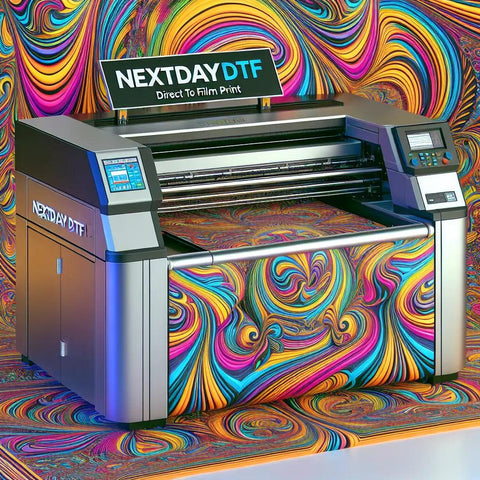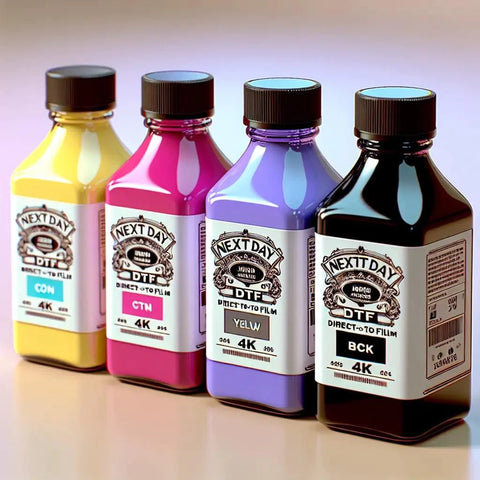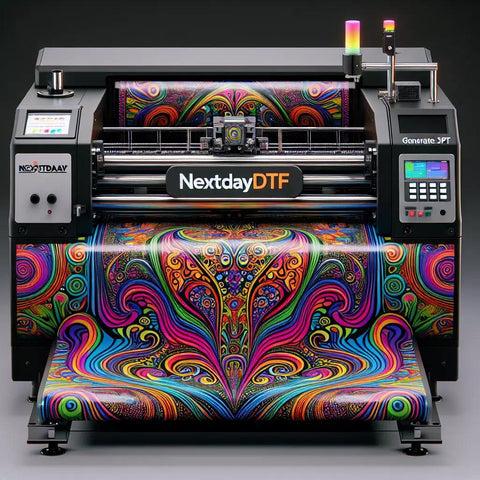-
Introduction to DTF Printers
- Brief overview of DTF printing technology
- Growing significance in the textile industry
-
Understanding Commercial DTF Printers
- Features and specifications
- Pros and cons of commercial DTF printers
-
Converted DTF Printers: An Alternative Approach
- Definition and conversion process
- Benefits and limitations of converted DTF printers
-
Key Differences Between Commercial and Converted DTF Printers
- Cost implications
- Print quality and speed comparisons
-
Considerations for Choosing Between Commercial and Converted DTF Printers
- Business requirements
- Long-term investment considerations
-
Optimizing DTF Transfers with Commercial Printers
- Leveraging advanced features
- Achieving consistent color management
-
Challenges of Converted DTF Printing
- Potential issues and troubleshooting
- Maintenance and reliability factors
-
Real-world Applications: Success Stories with Commercial DTF Printers
- Case studies showcasing commercial DTF printer success
- Industry-specific advantages
-
DIY Appeal: Why Some Choose Converted DTF Printers
- Personalization and customization benefits
- Niche applications and creativity
-
Future Trends in DTF Printing Technology
- Advancements in commercial DTF printers
- Innovations in conversion kits for DTF printers
-
Balancing Quality and Cost: A Critical Decision
- Analyzing the cost-effectiveness of each option
- Identifying the sweet spot for businesses
-
User Experience: Commercial vs Converted DTF Printers
- Feedback from users and businesses
- Considerations for ease of use and learning curve
-
Marketing Implications: DTF Transfers in the Industry
- How the choice of DTF printer affects market positioning
- Meeting customer demands and expectations
-
Conclusion
- Summarizing the key points
- Guiding businesses toward an informed decision
Commercial vs Converted DTF Printers
In the dynamic landscape of DTF printing, businesses face a crucial decision when selecting a printer—whether to opt for a commercial DTF printer or go the DIY route with a converted DTF printer. This article delves into the nuances of both options, comparing their features, costs, and real-world applications to help businesses make an informed decision.
Introduction to DTF Printers
Direct-to-Film (DTF) printing has revolutionized the textile industry, offering a versatile and efficient way to transfer designs onto fabrics. This technology has given rise to two primary choices for businesses: commercial DTF printers and converted DTF printers.
Understanding Commercial DTF Printers
Commercial DTF printers are purpose-built machines designed for high-volume and professional printing. These printers come equipped with advanced features, including precise color management, faster printing speeds, and automated processes. While they offer top-notch performance, businesses need to weigh the pros and cons before making a substantial investment.
Converted DTF Printers: An Alternative Approach
Converted DTF printers, on the other hand, involve the transformation of existing printers into DTF-compatible machines. This DIY approach appeals to those seeking a cost-effective entry into DTF printing. However, the process comes with its own set of challenges and considerations, making it crucial for businesses to assess their specific needs.
Key Differences Between Commercial and Converted DTF Printers
One of the primary factors influencing the choice between commercial and converted DTF printers is cost. Commercial printers often come with a higher upfront investment, but businesses must also consider long-term expenses, including maintenance and consumables. Print quality and speed are other critical differentiators, with commercial printers generally outperforming their converted counterparts.
Considerations for Choosing Between Commercial and Converted DTF Printers
When deciding between commercial and converted DTF printers, businesses must align their choice with their unique requirements. Factors such as print volume, quality expectations, and long-term goals play a significant role. Considering the investment as a strategic decision rather than a mere expense is essential for sustainability and growth.
Optimizing DTF Transfers with Commercial Printers
Commercial DTF printers offer a range of advanced features that can significantly enhance the DTF transfer process. From precise color management tools to faster printing speeds, businesses can leverage these capabilities to achieve consistent and high-quality results. Understanding and maximizing the potential of commercial DTF printers is key to unlocking their full benefits.
Challenges of Converted DTF Printing
While converted DTF printers offer a more budget-friendly entry into the world of DTF printing, they come with their share of challenges. Businesses opting for conversion kits need to navigate potential issues such as color inconsistencies, troubleshooting complexities, and the overall reliability of the modified printer.
Real-world Applications: Success Stories with Commercial DTF Printers
Examining success stories of businesses that have chosen commercial DTF printers provides valuable insights. Case studies showcasing how commercial printers have met industry-specific demands and delivered consistent results can guide other businesses in making an informed decision.
DIY Appeal: Why Some Choose Converted DTF Printers
The appeal of converted DTF printers lies in the hands-on experience and creative freedom they offer. Businesses and individuals who prioritize personalization and customization often find the DIY approach fulfilling. Exploring niche applications and creative possibilities with converted DTF printers can be a driving force for certain ventures.
Future Trends in DTF Printing Technology
As technology continues to evolve, both commercial and converted DTF printers are likely to see advancements. Commercial printers may witness improvements in speed and functionality, while conversion kits may become more user-friendly and compatible with a broader range of printers. Staying abreast of these trends can aid businesses in making future-proof decisions.
Balancing Quality and Cost: A Critical Decision
Achieving a balance between print quality and cost-effectiveness is a critical consideration for businesses. While commercial DTF printers offer superior quality, businesses must evaluate their budget constraints and long-term financial commitments. Striking the right balance is essential for sustainability and profitability.
User Experience: Commercial vs Converted DTF Printers
User experience plays a pivotal role in the choice between commercial and converted DTF printers. Feedback from users who have hands-on experience with both options provides valuable insights into the ease of use, learning curve, and overall satisfaction. Businesses should prioritize a positive user experience to streamline their printing processes.
Marketing Implications: DTF Transfers in the Industry
The choice of DTF printer can have significant implications for businesses in terms of market positioning. Meeting customer demands for high-quality prints and efficient processes is crucial for gaining a competitive edge. Understanding how the chosen printer aligns with market expectations is vital for successful marketing strategies.
Conclusion
In conclusion, the choice between commercial and converted DTF printers is a pivotal decision for businesses entering or expanding in the DTF printing landscape. By weighing factors such as cost, print quality, and user experience against their unique requirements, businesses can make an informed decision that aligns with their long-term goals.
Frequently Asked Questions (FAQs)
-
What is DTF printing, and why is it gaining popularity?
- DTF printing involves transferring designs directly onto a film for heat transfer onto fabric. It is gaining popularity due to its efficiency and versatility in textile printing.
-
What are the main features of commercial DTF printers?
- Commercial DTF printers offer advanced features such as precise color management, faster printing speeds, and automated processes for high-volume and professional printing.
-
Can existing printers be converted into DTF printers?
- Yes, existing printers can be converted into DTF printers using conversion kits. However, this DIY approach comes with its own set of challenges.
-
How do commercial and converted DTF printers differ in terms of cost?
- Commercial DTF printers typically have a higher upfront cost, but businesses need to consider long-term expenses, including maintenance and consumables.
-
What considerations should businesses keep in mind when choosing between commercial and converted DTF printers?
- Businesses should align their choice with their unique requirements, considering factors such as print volume, quality expectations, and long-term goals.
-
How can businesses optimize DTF transfers with commercial printers?
- Leveraging advanced features, including precise color management tools and faster printing speeds, is key to optimizing DTF transfers with commercial printers.
-
What challenges are associated with converted DTF printing?
- Challenges include potential color inconsistencies, troubleshooting complexities, and concerns about the overall reliability of modified printers.
-
How does the choice of DTF printer impact marketing strategies in the industry?
- The choice of DTF printer can have significant implications for market positioning, influencing customer perceptions and expectations.





Comments (0)
There are no comments for this article. Be the first one to leave a message!